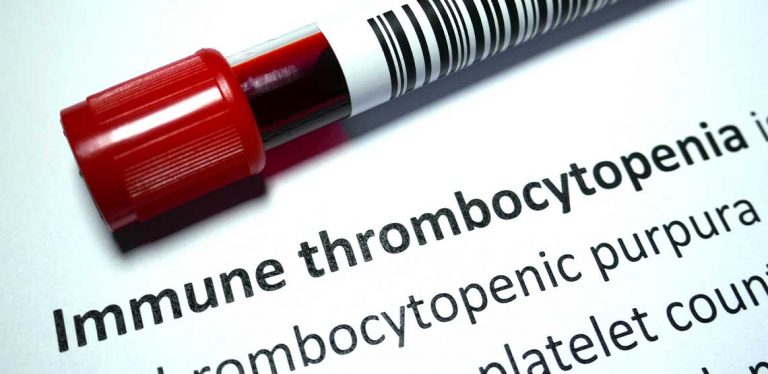Everything You Need to Know About ITP
Immune Thrombocytopenia (ITP) is a blood disorder characterized by a low platelet count, the cells responsible for blood clotting. This article will look at ITP blood disorders and the causes, symptoms, signs, risk factors and treatment options available, like PANZYGA, a medication used to treat ITP by providing high levels of antibodies to help regulate the immune system.
10 Signs of a Weak Immune System
- Frequent Infections: Getting sick often, with infections like colds, flu or sinusitis.
- Slow Healing: Wounds or injuries take longer to heal than usual.
- Persistent Fatigue: Feeling constantly tired and run down.
- Recurrent Infections: Experiencing the same infection multiple times.
- Allergies: Developing allergies or experiencing more severe allergic reactions.
- Autoimmune Diseases: Developing autoimmune conditions like rheumatoid arthritis or lupus.
- Digestive Issues: Frequent stomach upsets or gastrointestinal problems.
- Skin Problems: Skin rashes, eczema or persistent fungal infections.
- Swollen Lymph Nodes: Enlarged lymph nodes that may indicate an immune response.
- Unexplained Weight Loss: Losing weight without diet or exercise changes.
Causes of ITP
ITP mostly occurs as a result of low/decreased platelet count in the blood. This happens when the immune system makes antibodies that attack the body’s platelets. This immune system reaction can be caused by a few factors:
- Infections such as AIDS, hepatitis C and chicken pox (the most common factor).
- Medication.
- Immune disorders, such as lupus or rheumatoid arthritis.
- Leukemia's or low-grade lymphomas.
- Pregnancy.
- Sometimes the cause is unknown.
In some rare cases, a type of white blood cell (T-cells) attack the platelets leading to a decreased count in the blood.
Symptoms of ITP
The symptoms of ITP present differently in each person. However, most of the time it resembles that of other medical conditions. Therefore, you need to consult a doctor if you experience any of the following symptoms. The common symptoms of ITP are:
- Bruises (without injury) or purplish coloring around elbows or knees caused by movement.
- Tiny red dots under the skin (small bleeds).
- Heavy menstrual periods.
- Blood in the stool, urine or vomit.
- Bleeding gums or mouth.
- Nosebleeds.
- Bleeding in the head can be life-threatening.
ITP is mostly diagnosed through blood tests that identify whether there is a low platelet count. However, a physician might first try to rule out other possible causes of bleeding and the low platelet count. In some rare cases, a bone marrow exam might be needed.
Risk Factors for ITP
ITP seems to affect women more than men, especially younger women. People who also have these immune disorders can be at risk:
- Lupus.
- Rheumatoid arthritis.
- Systemic lupus.
- Erythematosus.
- Lymphoproliferative disorder.
- Myelodysplasia.
- Agammaglobulinaemia.
- Hypogammaglobulinaemia.
- Drug-induced thrombocytopenia.
- Alloimmune thrombocytopenia.
- Congenital/hereditary non-immune thrombocytopenia.
- Antiphospholipid syndrome.
Treatment for ITP
Acute ITP can be left untreated and will, in most cases, resolve on its own, especially in children. What would normally happen in these cases might be regular monitoring and platelet checks. However, for adults with ITP, treatment might be required as ITP can become severe or chronic (long term) in adults.
These forms of treatment listed below can be quite effective if tailored specifically for the individual with ITP. However, specific treatment is usually determined based on age, health status, extent of disease, tolerance to medications, procedures and medical history.
There are two common forms of treatment for ITP:
- Intravenous gamma globulin (IVGG) treatment.
- Steroids.
Steroids
These can be used to reduce the rate of platelet destruction by preventing bleeding. The effects of the steroids can be seen within two to three weeks when it is used effectively.
Related Search Topics (Ads)
Intravenous Gamma Globulin (IVGG)
This is a treatment that becomes effective within 24 to 48 hours and thus acts faster than steroids. It is a protein that consists of antibodies that effectively slow down and prevent the destruction of platelets in the blood.
It should be noted, that several side effects can follow the above treatment options, especially the use of steroids. The side effects that can present with the use of steroids are:
- Acne.
- Weight gain.
- High blood pressure.
- Indigestion.
- Irritability.
Apart from the ones listed above, there are other treatment options for ITP. These are:
- Splenectomy: The spleen is the part of the body that is most active in mediating the antibodies that destroy blood platelets. Removal of the spleen is considered in cases of chronic ITP to reduce the rate of platelet destruction when other forms of treatment are not effective.
- RH immune globin: A temporary medication that stops the spleen from destroying platelets. However, the person must be Rh-positive (and have a spleen) for this to be effective.
- Rituximab (Rituxan): Medication that slows down antiplatelet antibody production.
- Platelet transfusion: Getting platelets from a donor.
- Romiplostim (N-Plate) and eltrombopag (Promacta): This medication stimulates the bone marrow to produce platelets. It is only used in cases where other types of treatment have failed.
ITP Lifestyle Changes
Some people might not want to take the above treatment options for personal reasons. In these cases, there are several lifestyle changes and natural treatments that can be used to reduce the destruction or stimulate the production of platelets or preventative measures to keep someone with ITP safe from further harm. These are:
- Using protective gear when doing certain activities and avoiding activities that can cause bleeding in the brain due to frequent impacts to the head, such as martial arts, boxing and football (rugby).
- Be careful of getting any infections and treating possible infections as early as possible.
- Use over-the-counter medication, such as aspirin or ibuprofen with caution. Ask your doctor first before taking these.
Natural Remedies for ITP
To help in reducing the effect of ITP, it is encouraged that people with ITP eat more foods that increase platelet counts. These are foods that contain:
- Vitamin B12: beef liver, clams, eggs and dairy products.
- Vitamin C: oranges/juice, pineapples, mangoes, broccoli, cauliflower, green/red bell peppers and tomatoes.
- Folates: peanuts, oranges or orange juice, black-eyed peas and kidney beans.
- Iron: some green vegetables, mussels, beef, pumpkin seeds and lentils/dahl.
If possible, people with ITP blood disorders should avoid foods that decrease platelet counts. These are:
- Tonic water (specifically quinine a compound found in tonic water)
- Tahini
- Alcohol
- Cranberry juice
- Cow’s milk
Alternative Treatments and Supplements for ITP
Papaya Leaf
Papaya leaves and pegaga juice has been found to increase platelet count based on research done at the Asian Institute of Science and Technology in Malaysia in 2013.
Bovine Milk
Colostrum is found in cow’s milk and is the first substance a baby calf receives from his mother. In a 2017 study, this was found to contain proteins involved in the activation of platelets and proper immune system responses.
Ayurvedic Herbs
People who specialize in prescribing ayurvedic medication often recommend herbal therapies for ITP blood disorders. An herbal mixture called Amrit Kalash (MA4, MA5) has been found to modulate the immune system responses and has strong antioxidant properties which can improve platelet production and difficulties associated with ITP.
It should be noted however that most of these remedies are not approved by the FDA for use as treatment for ITP.
Cutaquig for ITP
Cutaquig is a medication that boosts the immune system by providing antibodies. Administered through a subcutaneous injection beneath the skin, it's used to treat conditions where the immune system is weak, like primary immunodeficiency disorders. By supplying immunoglobulins, proteins that aid in fighting infections, Cutaquig helps support the body's defense against diseases.
PANZYGA for Immune Deficiencies
Panzyga is a brand name for a medication called immune globulin intravenous (human), which is used to treat various immune deficiencies. It contains antibodies that help strengthen the immune system and fight infections. Panzyga is administered intravenously and is prescribed for conditions such as primary immunodeficiency diseases, chronic immune thrombocytopenic purpura (ITP), and Kawasaki disease, among others.
Can ITP Be Prevented?
Immune thrombocytopenia (ITP blood disorder), formally known as immune thrombocytopenic purpura, is a blood disorder that can affect both children and adults. The term thrombocytopenia is used to refer to the decreased number of platelets and purpura refers to the bruising or discoloring of the skin. Platelets are colorless cell fragments that exist in the blood to help stop bleeding and form clots. The normal platelet count for a human being is between 150,000 to 450,000. In ITP, the count is significantly below that at less than 100,000, which increases the risk of bleeding. As a result, ITP leads to internal bleeding, reddish dots that resemble a rash, skin bruising easily and/or bleeding gums.
The prevalence of ITP in high-income countries is approximately 3 to 10 per 100,000 children per year below the age of 16. ITP can present as either acute or chronic. Acute ITP is the most common form of ITP and usually does not require treatment. It most commonly occurs in children between the ages of 2 to 6 years old. The symptoms may occur due to a viral infection (e.g., chicken pox) and can disappear in a few weeks, or if not, less than six months. Chronic ITP is less common and affects people of every age. However, it is more common in adults and sometimes adolescents. This form of ITP can go on for a minimum of six months, several years and even a lifetime, thus constant follow-up with a hematologist (blood specialist) is required.
ITP blood disorder cannot be prevented. However, you can reduce the risk of further complications from ITP by:
- Treating or seeking treatment for infections immediately or as soon as possible.
- Ask your doctor for advice on what medications you can and cannot take (as listed above).
- Wear protective gear and protect yourself from bleeding and bruising or head injuries.
Article Resources
- PubMed.gov (Effect of Maharishi AK-4 on H2O2-induced oxidative stress in isolated rat hearts)
- PubMed.gov (Does Carica papaya leaf-extract increase the platelet count? An experimental study in a murine model)
- PubMed.gov (Antioxidant and protective effects of Amrit Nectar tablets on adriamycin- and cisplatin-induced toxicities)
- PubMed.gov (Public safety and dietary supplementation)
- Healthline (How to Naturally Increase Your Platelet Count)
- Mayo Clinic [Immune thrombocytopenia (ITP)]
- Platelet Disorder Support Association (Herbal Therapies)

